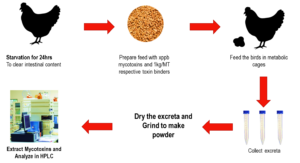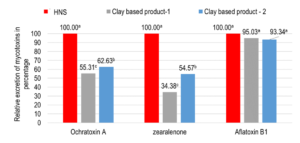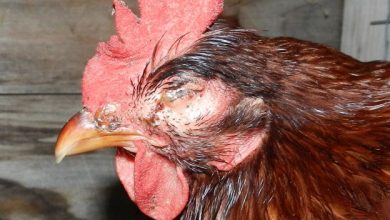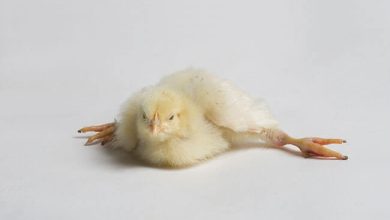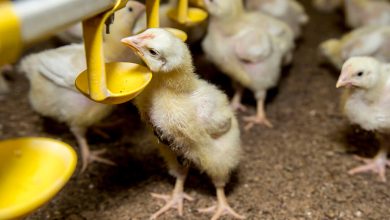An Innovative Way to Evaluate Efficacy of Mycotoxin Binders in-vivo Mycotoxin Excretion Study

Dr. Rahul Mittal- Associate Product Manager, Kemin
Nabila Fathima- Sr. Research Associate, Kemin
Feed safety is vital to ensure food safety and human wellbeing. As consumption of animal-based protein is expected to rise by 70 % in 2050, more feed will be required to be produced. Ensuring feed safety will assure sustainable production of animal proteins. But, feed safety is threatened by multiple factors. These might be physical factors like metal fragments, nanoplastics, chemical factors like mycotoxins, heavy metals and pesticides or, biological threats like bacteria, virus, molds, etc. [1] While all other factors have their significance, one major element to ensure feed safety is prevention of mycotoxin contamination in feed ingredients, which when consumed by animals impairs the health and productivity. Common methods to prevent toxicosis in animal is the use of various adsorbent based toxin binders. These adsorbents can be bentonites, organically modified clays, activated clays, synthetic clays, etc. There is a plethora of product offerings based on clays, that it is often confusing to choose a right product for all toxin related needs.
Quintessentially, toxin binders are used in feed as a preventive strategy and, if there is an uneven contamination in various treatment groups, measuring its efficacy in a growth trial will not yield promising conclusions about the efficacy of product. Another method is in-vitro net binding data for multiple mycotoxins. This is a conventional method to test efficacy of a toxin binder. This may help in judging comparative efficacy between different toxin binder alternatives but cannot exactly replicate multiple factors that affect the efficacy of toxin binders in the live bird.
Recently, KAI R&D team completed a series of innovative and insightful studies which further helps to analyze various toxin binders. One of these studies was called in-vivo mycotoxin excretion study. Mycotoxins, aflatoxin B1, ochratoxin A and zearalenone were selected for the studies as their prevalence and implication on birds’ health is quite high in South Asian context [2].
What is in-vivo mycotoxin excretion study?
In this study a known quantity of mycotoxin and test toxin binder is mixed in feed, which is then fed to previously starved birds in metabolic cages. Excreta is collected and analyzed for mycotoxins content [3]. (As illustrated in Fig.1)
• Concentration of Aflatoxin B1- 50ppb, Ochratoxin A-100 ppb and Zearalenone-100 ppb was used for the study.
• Kemin’s Hybrid Nanosilicates (HNS) technology was tested against two other brands (Clay based product-1 containing organically modified clays and Clay based product-2 containing only bentonite).
Fig. 1 Method and process for in-vivo mycotoxin excretion study
How is this study different?
While, in-vitro methods mimic the pH of gut and provide an approximate measure of efficacy, in-vivo binding on the other hand is a direct measure of total mycotoxin excreted using a specific binder. For e.g., if a toxin binder can excrete 90% of Aflatoxin B1 in excreta, it reduces the chance of mycotoxicosis by a great extent and can be trusted to prevent aflatoxicosis.
Results
• HNS and both the clay-based products were able to excrete high amounts of Aflatoxin B1.
• In case of Ochratoxin A and Zearalenone, Hybrid Nanosilicates (HNS) outperformed the other brands and was able to excrete maximum amount of mycotoxin. This is because HNS has a greater affinity towards a wide range of mycotoxins, while normal bentonite-based products have higher efficacy only for Aflatoxin B1 [3]. (Fig.2).
Fig 2. in-vivo mycotoxin binding study with broiler birds. Data shows the relative percentage excretion of mycotoxins with respect to Hybrid Nanosilicates (HNS) (mean ± SE, n=12). Superscripts with different alphabets denotes statistically significant difference between the products (P≤0.05).
Conclusion:
In-vivo excretion study can be an ideal measure to test the efficacy of a toxin binder. An ideal toxin binder should have high affinity towards a wide spectrum of mycotoxins and should be able to excrete it from the bird’s body. In this study, HNS outperformed both the clay-based products. To ensure feed and food safety from mycotoxin challenge, a technology like HNS can be suggested as a better alternative. HNS binds to the largest spectrum of mycotoxins proven in in-vitro and in-vivo studies.

